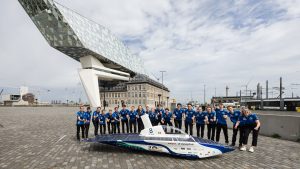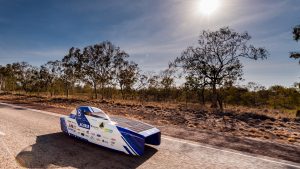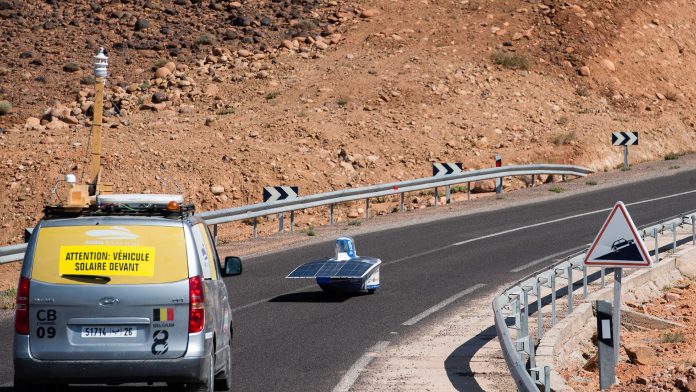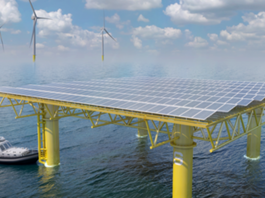Jo De Loor, VP of Market Development and Strategy at ST Engineering iDirect, discusses the upcoming World Solar Challenge and how satellite technology and solar power can power sustainable transport.
Our planet is facing a plethora of challenges today, but one of the most pressing ones is how we wean ourselves off fossil fuels and become more sustainable.
Humans consume enormous amounts of energy, which helps to power our lifestyles. Since the industrial revolution, transport has been one of the primary consumers of this energy. We are addicted to it.
Most households worldwide own cars, many with multiple vehicles, and they are the source of our growing greenhouse gas emissions. Transportation is the major driving force behind an increasing world demand for energy.
There is an urgent need to step away from our traditional fuel sources and move to more environmentally-friendly forms of transport. Close to a quarter of energy-related global greenhouse gas emissions continue to come from transport – with emissions only projected to grow substantially in the years to come.
Alternative forms of energy are being scoped out by governments and private industry, with solar energy predicted to form a large part of our planet’s energy portfolio as we go forward.
Electric vehicles (EVs) are being heavily promoted worldwide and are the most commonly found green transport on our roads. However, there are big questions surrounding EV charging infrastructure and whether there will be enough energy on the grid to sustain the sheer amount of EVs anticipated to flood the roads in the coming years.
Solar power is an alternative to electric vehicles, which cannot be powered without vast electric charging points. Solar power is a highly-sustainable alternate form of energy.
The World Solar Challenge
So, why is a satellite company writing about sustainable transport and solar power? ST Engineering iDirect is involved in a key event that takes place every two years – the Bridgestone World Solar Challenge (22-29 October 2023).
Organised to stimulate research into sustainable road transport development, the competition calls for designing and constructing a solar-powered car, with teams travelling over 3,000 kilometres from Darwin to Adelaide in Australia via Highway 1.

It’s a race to the finish, and it brings together teams of university students from across the world who take time from their studies to dedicate themselves to developing the solar vehicle that they will race across Australia.
The science and technology behind these vehicles offer insight into the development of solar-powered cars and battery efficiency. As well as advancing technology, it raises awareness of the potential of solar energy to power vehicles and, thus, as a replacement for traditional petrol and diesel-powered cars. The World Solar Challenge is followed by a global audience of over 25 million, generating industry partnerships across many sectors, including energy, engineering, financial, material sciences, and IT.
This year will mark the tenth Belgian entry developed by a group of 20 engineering students, each working full-time for a year on the design and construction of the vehicle. It is the most aerodynamic solar car ever built in the history of the Belgian Solar Team, featuring a state-of-the-art battery pack and an ultra-efficient motor. With this car, the team will defend their Australian title as winners of the World Solar Challenge – last held in 2019.
Access to connectivity is incredibly challenging in the Australian terrain, but satellite technology allows connectivity anywhere – even in Earth’s deepest, most remote areas. In the past, keeping in touch was tough. Some teams were even followed by satellite trucks. Effective, yes, but incredibly expensive. Another solution was to ‘save’ social media posts and videos to upload when connectivity became available as they got closer to major towns etc. It works, but the beauty of social media and live streaming is that it offers immediacy and creates a real-time “reporting” frenzy, but by the time teams managed to upload their posts, the moment was lost.
Our partnership with the solar car team has enabled us to provide game-changing satcom-on-the-move (SOTM) capabilities for the betterment of STEM. We mount a Kymeta u8 flat panel antenna onto the ‘brains’ car, which follows the solar car. Utilising satellite services from Intelsat and underpinned by the ST Engineering iDirect satcoms technology, this connectivity solution has become essential for the teams in terms of their overall situational awareness.
With constant connectivity while driving, the people in the ‘brains car’ (a vehicle that follows the solar car equipped with information and team members to help decision-making) can connect to get the latest real-time weather updates, including the most current information on highly-anticipated sun exposure and cloudless skies while en-route, to recharge those solar-driven batteries. The ability to adjust the navigation and route planning based on the most up-to-date weather pattern is the element that can enhance their chances of winning. Every ray of sun counts – and if that means making a run for the sunshine or adjusting while on the track due to the latest information received over the always-on link satellite link, access to satellite connectivity makes for a winning result.
Bringing the vision to life
The Solar Challenge shines an important light on the potential of solar power and is gaining traction on the ground.
The cost of solar has been decreasing rapidly over the last two decades, so much so that in the Middle East and Australia, solar power is now the cheapest way to generate electricity. Experts predict that, by 2050, more than 55% of the energy in Europe will come from renewable energy, of which solar power is a significant contributor. If governments worldwide committed to achieving their targets, this would make solar power the single largest contributing energy source to the European Union.
Alongside the technology supporting its distribution, normalising solar power’s use will be key to seeing its capabilities filter our daily lives. Helping the cause, many commercial vehicle manufacturers are taking notice.
In recent years, household automotive brands have integrated solar panels into their cars, including Mercedes-Benz’s plans to outfit an upcoming electric vehicle with rooftop solar cells. At the same time, Toyota has sometimes offered limited-capacity solar panels as an add-on to its Prius hybrid.
California-based start-up Aptera Motors also claimed that 2020 pre-orders for its futuristic three-wheeled solar EV sold out in less than 24 hours.
As well as not having to pay for petrol or the maintenance costs of internal combustion engines, solar panel cars are durable and long-lasting, often with a lifespan of up to 30 years or more – typically longer than traditional vehicles.

While solar-powered cars may not be a vehicle for the masses just yet, there are teams of designers and engineers across the globe, including those taking part in this year’s challenge, working to find ways to create an efficient electric car powered solely by solar.
These opportunities create new conversations between industries that otherwise may not have been aware of each other. And those conversations can lead to something bigger and more significant – something that could change the world.
Supporting innovation in STEM
Challenges such as the World Solar Challenge are pivotal to developing sustainable solutions that can ultimately be deployed in the real world. With the opportunity to work on projects such as these, young engineers can see their capabilities.
The challenge also combines a group of male and female engineers from diverse backgrounds, utilising cutting-edge technology. The cars feature the latest solar panels, used for satellites than Earth solutions.
They feature the best in battery technology, the most lightweight, carefully machined materials focusing on efficiency and the complex calculations that come together to model the best aerodynamical result.
For more information on the Bridgestone World Solar Challenge, visit https://worldsolarchallenge.org/.
You can also follow the Innoptus Belgian Solar Team on social media.









